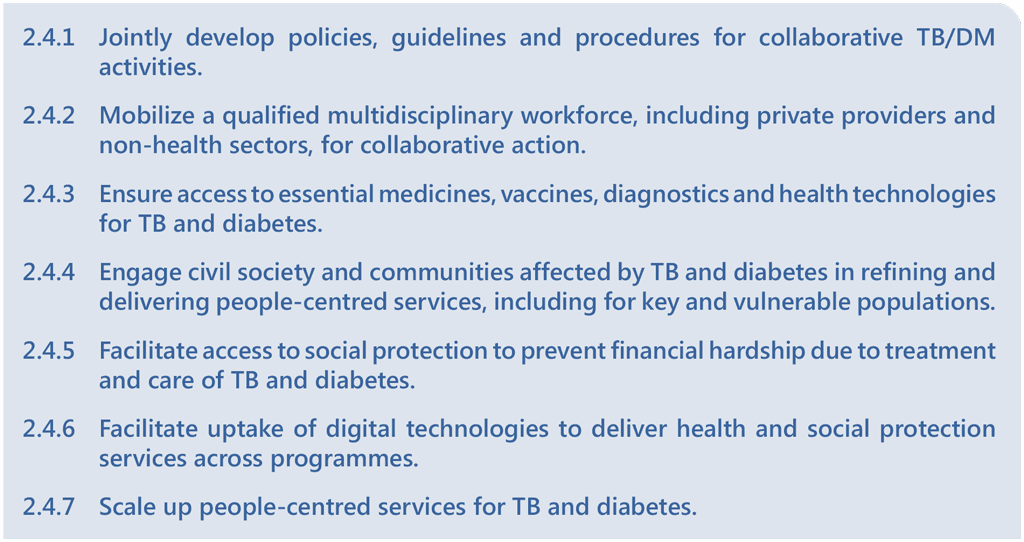3.6 TB IPC in clinics that provide diabetes care
While people living with diabetes are more vulnerable to various respiratory and bacterial infections, including TB, health-care settings that provide diabetes care may have limited procedures for infection control (139). Some of the people who attend clinics that provide diabetes care will have undiagnosed TB, which may present a risk of transmission. Data are lacking on the exact time it takes to become non-infectious after effective TB treatment is commenced.

 Feedback
Feedback



